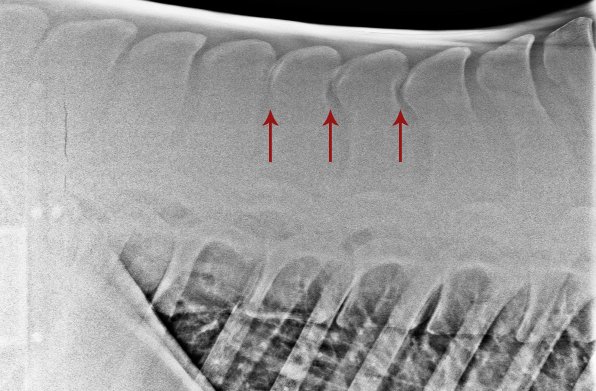My horse has kissing spines. Now what?
Kissing spines is a pathology where the spinous processes of the spine are too close together. This may create inflammation and pain.
Kissing spines as a diagnosis has become quite popular in the past decade. Much like arthritis or navicular syndrome, it's a horse owner's nightmare. Some research suggests that a third of riding horses have some level of kissing spines, which is an astonishing number. Despite the fact that there is no »cure« for it, in most horses, it can be managed well. Upon receiving a kissing spines diagnosis, it is imperative to go over your options with your veterinarian. In some cases, surgery is recommended, and it can work quite well in a lot of horses. However, it is not the only option. If your veterinarian says your horse is not a candidate for surgery, there is still a lot you can do to keep the horse happy and
1.
First of all, we need to make sure the horse is not in pain. Your veterinarian will be able to provide the best option for making sure the horse will be comfortable in his day to day life. While there is pain, nothing we do will have an effect.
Creating healthy movement patterns is an important part of managing kissing spines.
2.
After the pain is managed successfully, make sure the horse has access to free movement. Moving freely throughout the day provides low-intensity stimulation for the postural muscles that protect the spine.
3.
Make sure the rest of the horse's body is functioning as well as it possibly can. This means that the hooves and teeth are balanced and any soft tissue restrictions are addressed. At this stage, taking care of a horse with kissing spines becomes a team effort. Make sure to work with professionals who are all on the same page and are working towards a common goal.
4.
Start with re-education. This does not mean to bring the horse back to work. This means slowly and gently developing better movemement patterns than the ones that led to the issue in the first place. Re-education means short sessions of very slow work in hand, to teach the horse how to orchestrate his movements in a way that protects his spine. This goes hand in hand with slowly developing postural muscles. As the horse gets better at moving in a healthy way, the sessions can become longer and we can introduce strengthening exercises.
5.
Keep an eye out for changes. Make sure your horse is seen by a vet on a regular basis, to evaluate the progress and adjust the re-training as needed.
Make sure to have your vet check your horse on a regular basis to track progress.
Because keeping a horse with kissing spines is a team effort, make sure the veterinarian, trimmer (or farrier), bodyworker and trainer are communicaiting with each other. Small changes seen by one of the professionals will affect the work of the others, so it is vital that information is shared. The road to better movement and function can be a long one when we are dealing with kissing spines, so be patient. Take a lot of pictures and keep a diary. This will make the progress more tangible.


